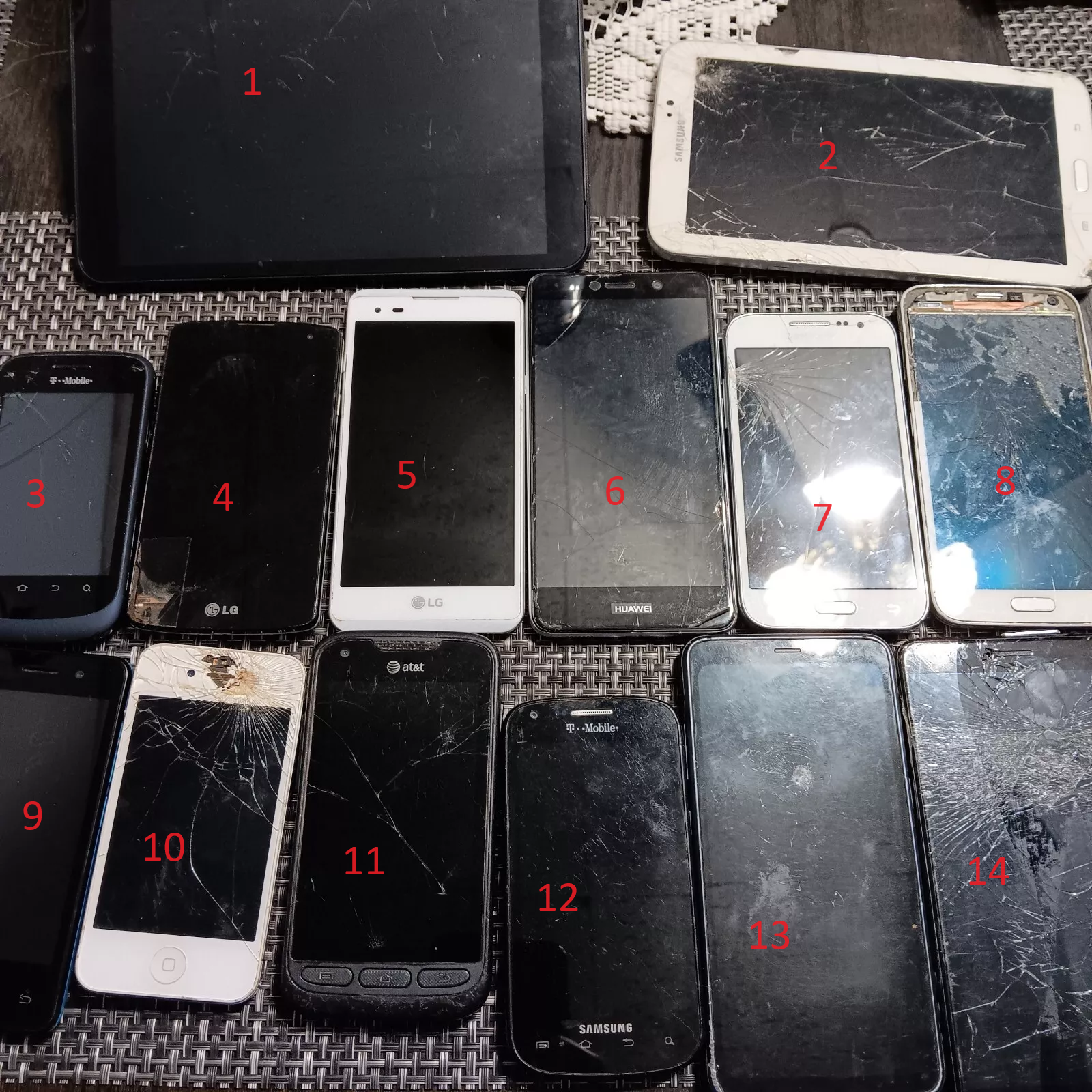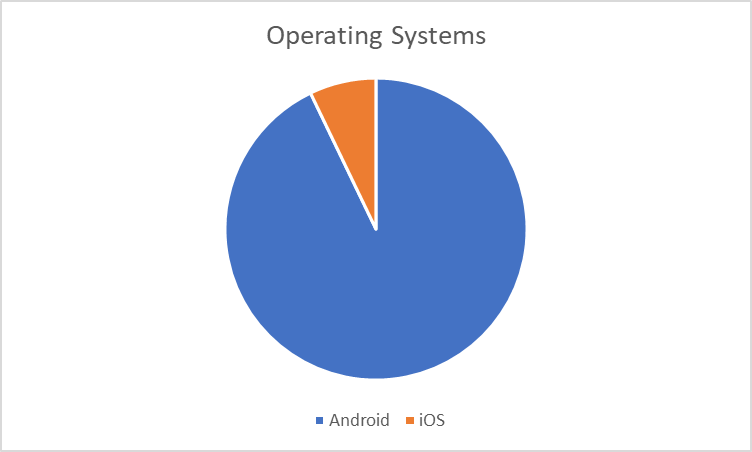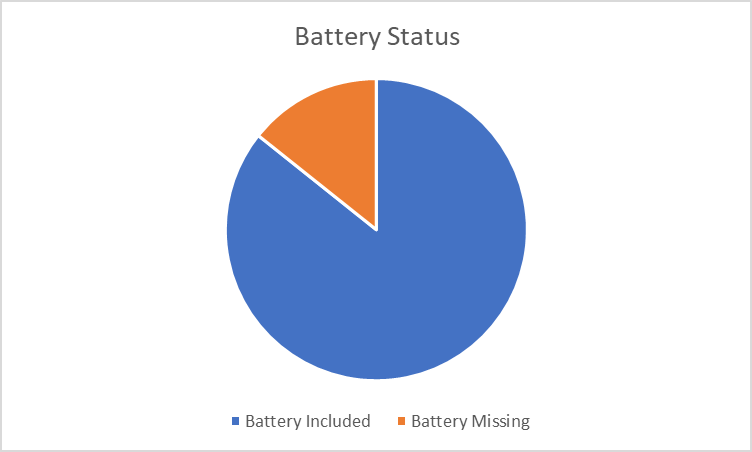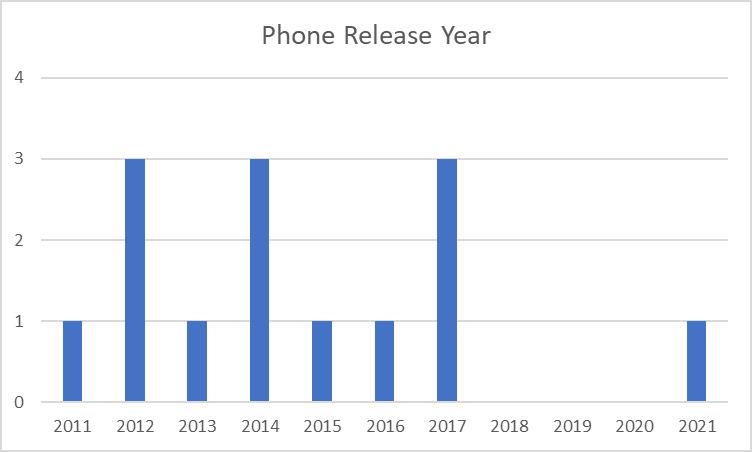Introduction #
If you go on eBay and search for “cell phone scrap,” you can currently find over 200 listings of junk cell phones for sale. Some of these lots pre-date the first iPhone (2007) and consist of earlier flip/slide phones, and some are even older Nokia brick phones, but for the most part these phones are 21st century electronics. Sellers list them as being sold for scrap, parts, or “gold recovery.” But what are they actually good for? Is gold recovery practical? Can they be cleaned up and restored to a useful purpose? To answer some of these questions, I bought a listing for 5 pounds of phones and got 14 of my own abandoned devices to poke around. For this experiment I spent a whopping $27 and some change to obtain the original devices (including taxes and shipping). The eBay seller has claimed the phones came from “various storage unit and rental clean outs.”
The Phones #

The devices I received are largely Android devices with Micro USB connectors released in the 2010s. Specifically, the devices are as follows:
- QLink Scepter 8 Tablet Gen 1
- Samsung Galaxy Tab 3 SM-T217S
- T-Mobile Concord ZTE V768
- LG Tribute LS660P
- LG Tribute HD LS676
- Huawei Ascend XT2 H1711
- Samsung Galaxy Core Prime G360T
- Samsung Galaxy S5 SM-G900A
- Sky Phone GCSKY40D
- Apple iPhone 4S
- Samsung Galaxy Rugby Pro I547
- Samsung Galaxy Blaze SGH-T769
- Samsung Galaxy S8 Active
- ZTE Blade Z Max Z982
If you look at the image of these devices, you can see that all but two have very apparent glass damage. Of the two without grass cracks, The QLink Scepter 8 (Number 1) is the only one with a functional screen. The other device is the LG Tribute HD LS676 (Number 5) but after a power on test it is clear that the screen is non-functional despite the good glass appearance.
Phone Characteristics #
Diving further into the actual distribution, here are the high-level statistics of the phones.
13 of 14 are Android devices, with only the oldest device being an iPhone.

12 of 14 devices have batteries included. Practically there are only 11,
devices since the iPhone battery was swollen and I took it to Home
Depot for disposal.

10 of 14 devices utilize regular micro-USB. Two are new enough to have
a USB C connector, one utilizes the old 30 pin Apple connector, and the
Galaxy S5 uses the awkward micro-USB 3.0 connector. Micro-USB 3.0 had
two connector cavities so it can still be used with a regular micro USB
cable.

Per the distribution below, most of the phones are from the 7 years
between 2011 and 2017 (inclusive). The outlier is the QLink Scepter 8
which was released in 2021 but is a very low performance, low cost
device that retailed for somewhere around $35 USD. Considering these
devices are still sold in the used market for $20-$25, if I can find
a use for this device it can almost justify the entire purchase.

Use Cases #
Now that the items have been indexed and categorized - how feasible are the use cases that sellers are proposing for these items?
Scrap #
Internet searches for phone scrap reveal many cities or companies that hold electronics recycling events to collect old items for bulk scrapping. If I look for local options, I can find companies like Fair Salvage that is currently listing a scrap value of Cell Phones at $1.50/lb. If I were to go with this option, I could receive a whopping $7.50 for my 5 lb. haul, and this presumes the weight is allowed to include batteries.
Expanding my scrapping horizons into other parts of the Midwest, there is a company called BOARDSORT in Ohio that has a price list including $3/lb. for phones with no battery and no cover, or $13/lb. for cell phone boards removed and stripped of any screens, batteries, heatsinks, etc. Without going through and disassembling everything, research indicates that 34.09% of a phone’s weight is the motherboard. They don’t separate out the metal covers and heatsinks, so in reality I’d be looking at less than 34% of 5lbs = 1.7lbs. If all the covers and heatsinks weigh 0.2lbs, I’d be at $20 of scrap if I can clean it up (free labor!) and drive it multiple hours into Ohio. I’d be coming up $7 short and spending hours disassembling and transporting the boards, so not a rosy proposition. BOARDSORT does seem to be on the better end of scrap prices, with other places like Rockaway Recycling in New Jersey listing prices between $0.10/lb. and $1.75/lb. depending on the PCB grade.

Parts #
Moving into the part value of these phones, most phone repairs involve replacing either the screen or the battery. For these phones, the screens are mostly destroyed, and the batteries are in an unknown condition. If the batteries were to sell in a timely fashion (unlikely due to their age and small market), I estimate they would go for $5 to $10 on sites like eBay, and justify the price of the scrap.
Gold recovery #
It is estimated that there is, on average, 0.034g of Gold in a smartphone. With a current spot price of $85.44 per gram, and a 14-phone collection, there is 0.476g of gold in my collection and that is worth $40.67. Considering the extensive processing and use of acids described by this informative Quora post, this does not sound like a feasible path to do in small quantities.
Conclusion #
This concludes the introductory post of project Trash Pile. As I hope to have demonstrated above, these sorts of resale lots don’t appear promising for parts, scrap, or gold recovery. In follow up posts I plan to dive deeper into other uses - data exfiltration, device pin cracking, and reverse engineering.
To see the first teardowns, check out part 2 here.
